If you’ve ever wondered about growing potatoes from true seeds, here’s the info you need before getting started.
I think most gardening enthusiasts are always looking for the next challenge.
If you’ve successfully started your own seedlings for a few years, you may start to wonder- what’s next? What else can I grow from seed?
I have not purchased any bedding plants in quite a while. From vegetables to perennial flowers, I’m always thrilled when any of my new seed-starting experiments turns out well.
Of course, I’ve had my fair share of flops, too. Sometimes seeds just don’t germinate. Sometimes the seedlings do amazing indoors, just to shrivel up after they’re in the ground.
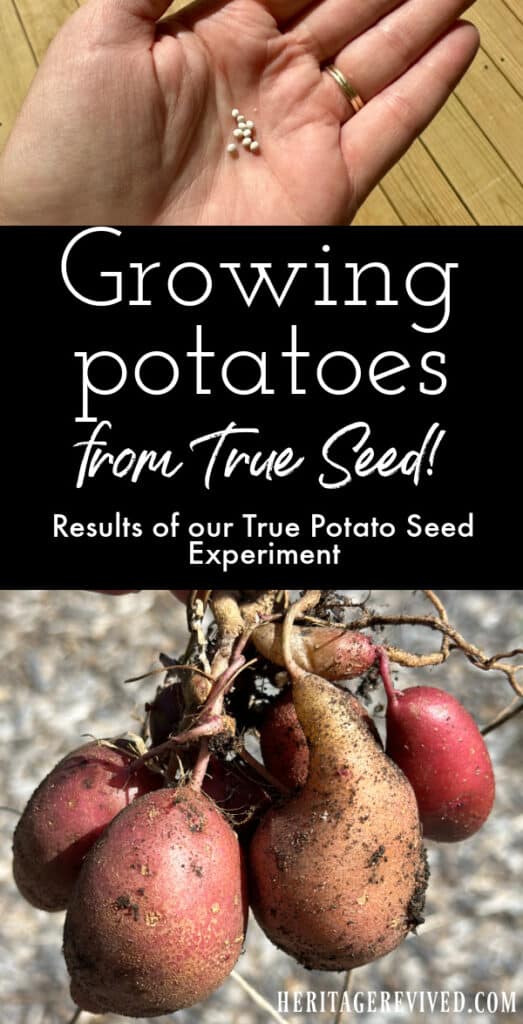
This site contains affiliate links to products. As an Amazon associate, I earn from qualifying purchases. Please read my disclosure for more info.
Discovering True Potato Seeds
With potato seeds, they proved to be an interesting challenge, which I’ll discuss in this post. There are many pros and cons that you’ll want to know about this method.
Because of course, as gardeners and homesteaders, we live and learn — and go on to share our seedling knowledge with, well, anyone who will listen. 😉
After growing potatoes from true seeds for the first time in 2023, I knew I had to share this experiment with my friends.
I had always wondered if there was a way to start potatoes from true seed, instead of “seed potatoes” that most of us are accustomed to planting.
From a self-sufficiency mindset, it seemed odd to me that you have to either:
- Buy potatoes (little “seed potatoes”, or tubers) to make more potatoes, OR
- Hope your potato crop from last year lasted long enough to plant your own “seed” potatoes the following spring.
I’ve found that the longest-storing potato varieties are hard to find in my area. You also need pretty specific conditions to store them, which I don’t have at my house, at the moment. (A very cool room with low humidity.)
So when I came across Clancy potato seeds, which are True Potato Seeds (TPS), I was intrigued.
How do you get (actual) potato seeds?
What I learned was that when you buy seed potatoes (tubers) to plant, most of these have been cultivated for specific qualities over time.
Many of these tubers will not produce potatoes that actually flower, or produce potato berries- where the seeds come from.
Some of the plants are actually sterile. But when you plant true potato seeds, you are more likely to get flowering plants, and berries.
From the berries, you can save the seeds, much like you would with tomato seeds.
But even if you decide not to try to save the seeds yourself, you can continue to buy the seeds each year (or start a stash).
Our True Potato Seed-Starting Experiment
I purchased Clancy potato seeds and started them about the same time I started my tomatoes and peppers.
These seeds are very tiny, so this variety is pelleted; that is, there is a coating around the actual seed so that you can handle them more easily.
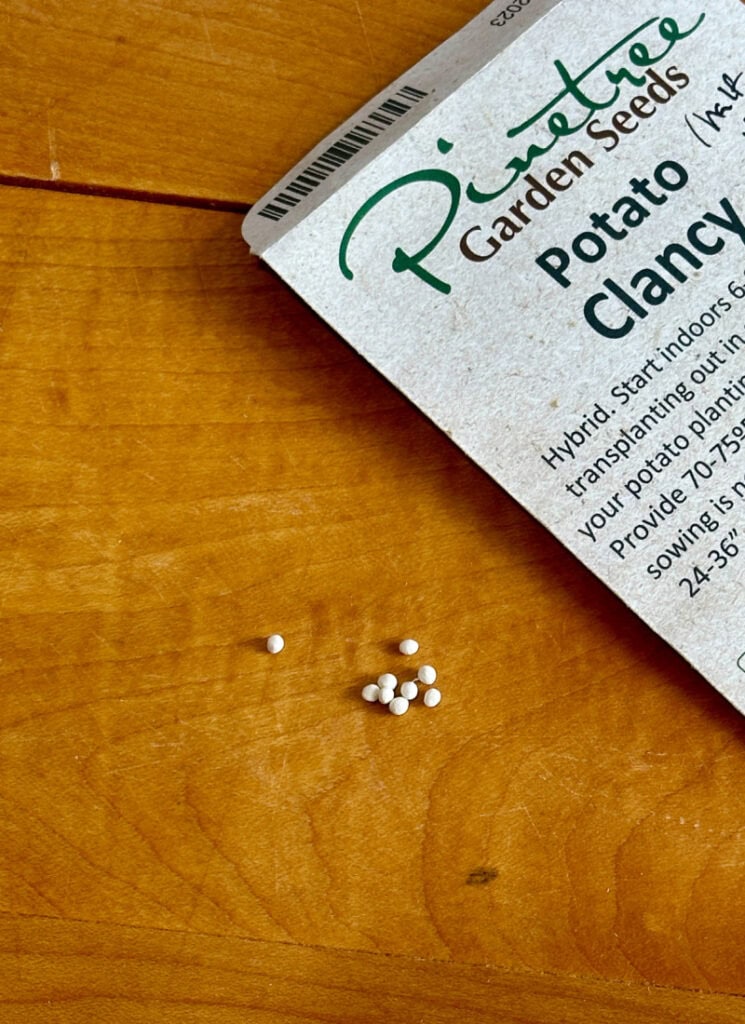
There aren’t a ton of seeds in one packet, so I thought the pelleted seeds were a great idea to avoid losing/wasting the most important part of this experiment.
One thing I noticed was that they were slow to germinate, and slow to grow. In fact, I realized I should have started them in about January in order to plant them out in Mid-May.

Since I was going to be growing a plant and not sticking a tuber in the ground, I knew I would be planting them out later than everyone else planting tubers. However, I didn’t account for how slow-growing the seedlings would be!
This could have been because I did have some issues with my seed starting mix, though. I tried a new mix that year that I wasn’t pleased with.
I’ll be interested to see how the seedlings do next time when I start them a bit earlier and with a more reliable potting medium.
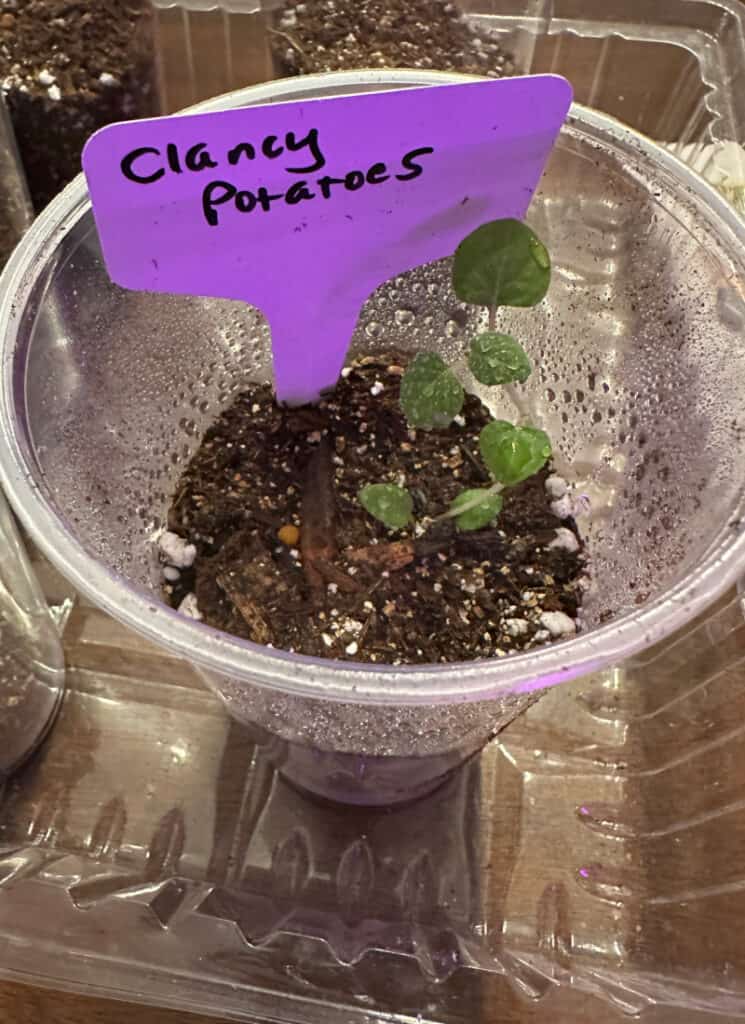
Planting Out Potato Plants Grown from True Seed
When I planted my seedlings in the garden, they still weren’t very large and I didn’t expect much from them. (They were larger than in the picture above; more like a small tomato seedling.)
I didn’t closely track my success rate, but I believe only about half of the seedlings I started actually made it into the garden. Probably not bad for the first time.
I planted out a row of about 8 potato plants in my raised row garden, and then a few more plants in large containers.
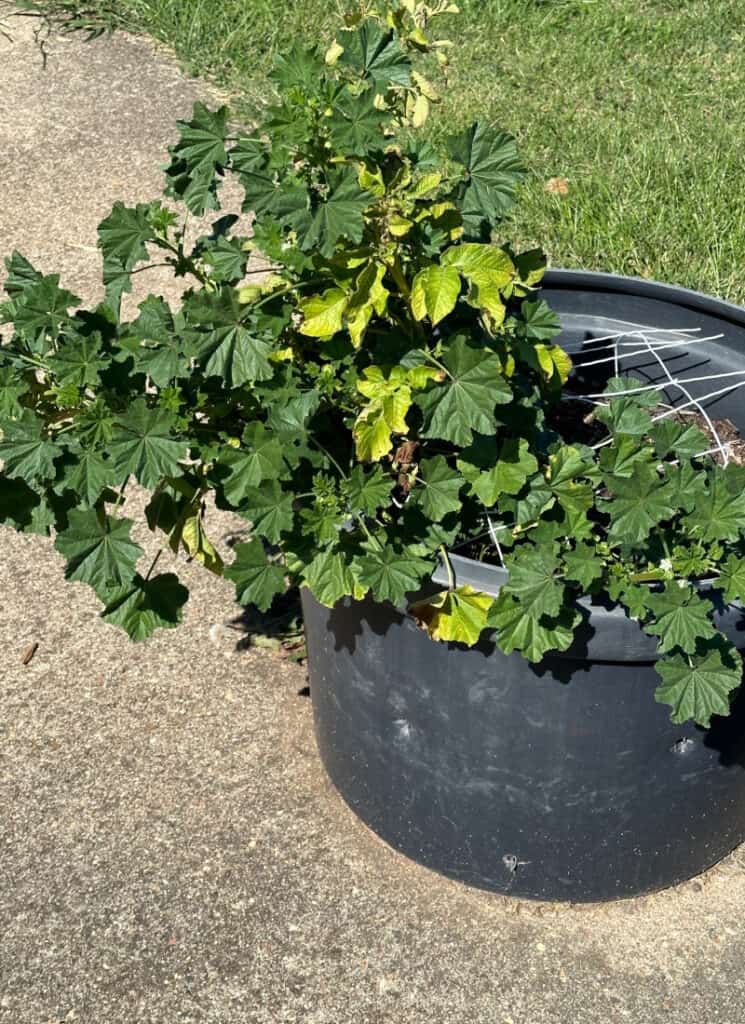
I wish I had taken pictures of the row of plants when they were flowering; they really had beautiful white-and-purple blooms!
The Harvest: Growing potatoes from true potato seeds
Some other factors that were odd when growing these potatoes is that they flowered constantly. I kept waiting for the flowers and leaves to die back, but they kept on going and going into the late summer.
After reading more, I now know that I should have pinched off the flowers so the plants could focus more energy on the roots — i.e., the potatoes.
I could have also left one plant to flower and produce berries and save those berries, if I really wanted to.
In the end, we had a pretty small harvest from eight plants: about two bowls of potatoes like the one below.
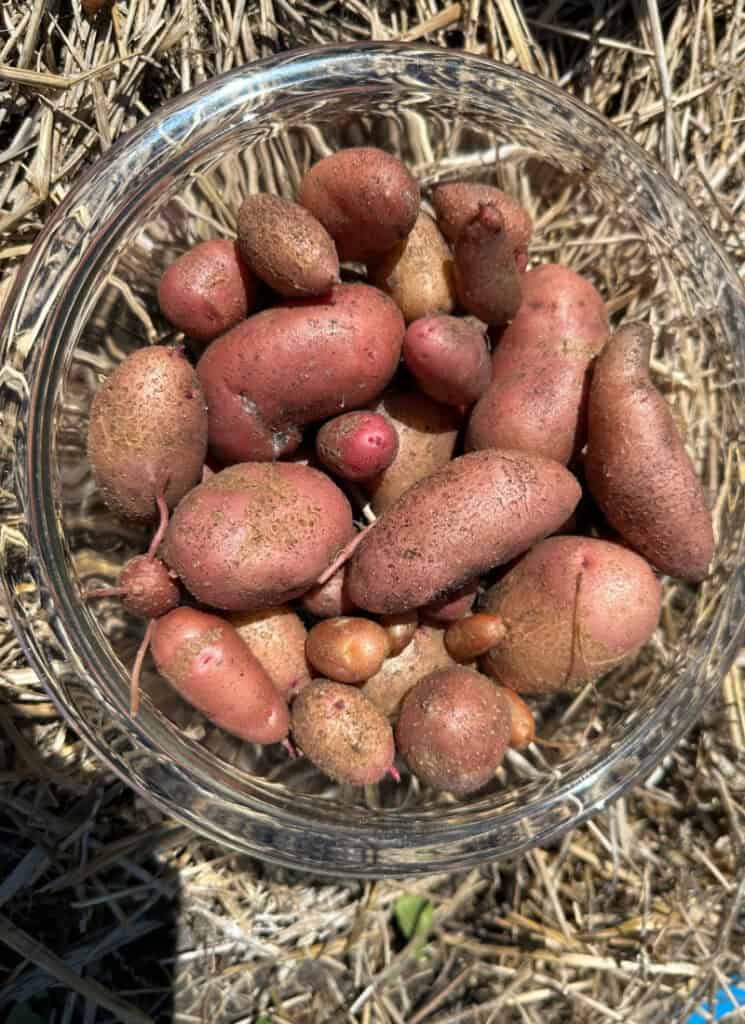
I had purposefully planted them in the shadier parts of my garden, and I think this may have stunted them a bit. I also did not fertilize them much, which is obvious!
In a raised row garden, there really isn’t a way to “hill” the potatoes, but they never seemed in danger of seeing sunlight. I did pile on a thick layer of straw on top of my plants as they grew, though.
Pros and Cons of Growing Potatoes from Seed
I learned a lot from our first True Potato Seed experiment. Here are some things to think about if you’re curious about seeds versus tubers.
Benefits of Growing True Potato Seeds
- Seeds can be stored up to fifteen years!
- And, seeds are much easier to store than tubers, which need specific conditions for almost an entire year in storage (tricky).
- There is less chance of disease when you start your own plants from seed, versus planting tubers
- You can start seeds early but won’t be in a rush to plant them out in early Spring when the ground may be difficult to work (as with tubers)
- You can cultivate your own, unique variety of potatoes, since each plant will be entirely new – not a clone of its tuber “parent”
- Potatoes from True Potato Seed are said to be more flavorful
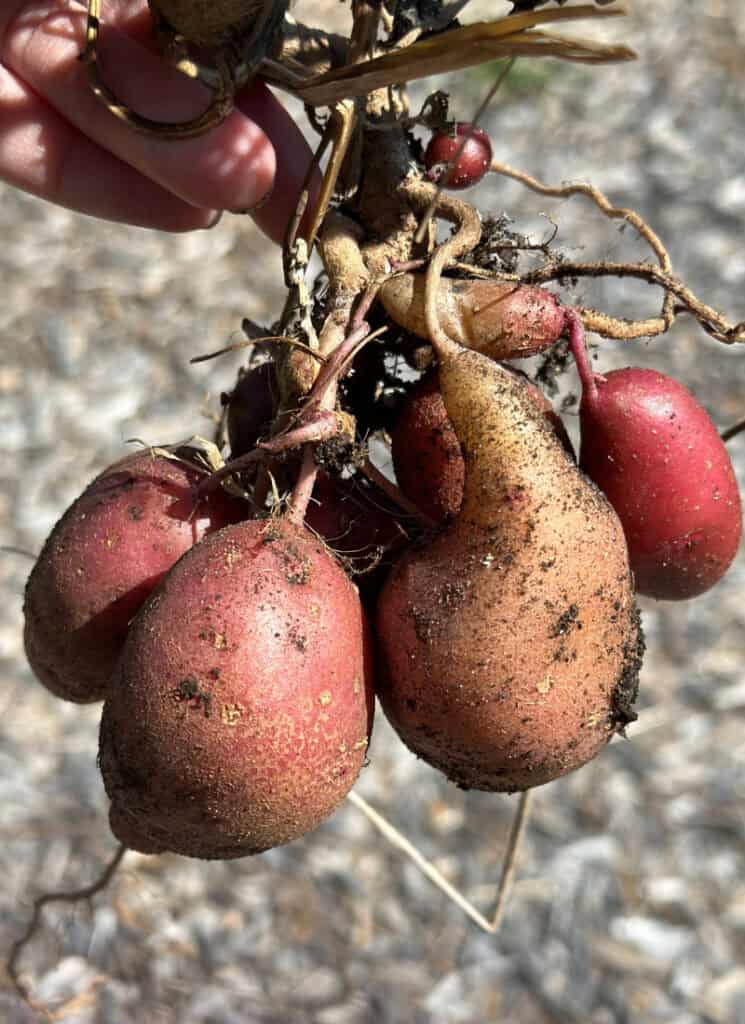
Downsides of Growing Potatoes from True Potato Seeds
- Germination rate may not always be great or consistent
- Plants are slow-growing and need lots of light. 14-16 hours of bright light per day is recommended, so you definitely need indoor grow lights.
- May not be suitable for colder climates with shorter growing seasons
- May produce unpredictable yields or need consistent fertilizer/high soil quality to match the same yield as with planting “seed potatoes”
- You may need to consider planting “seed potatoes” in early Spring, while watching and waiting for your True Potato Seed plants to thrive (or not!)
- May be less cost effective than planting seed potatoes, depending on germination/success rate
Would we start Potatoes from True Seed again?
Actually, yes! This year (2024) I had planned to just plant potatoes from “seed potatoes”, but by the time I had a spot ready to plant them, everything had sold out in my area.
When I looked up similar long-storing seed potato varieties online, they were quite expensive with shipping costs.
All in all, I figured that if I had enough True Potato Seeds, I could have started the plants and used the knowledge from last year to produce a better result. And, the cost for the seeds would have been similar.
So really, my advice is to examine your goals. If you just want a big potato crop, maybe to can or freeze hash browns, you’re probably better off planting inexpensive seed potatoes from your local farm store.
But if you are intrigued (like I am) about cultivating your own potatoes from seed, which could adapt to your climate over time and become an amazing storage potato — you might consider TPS.
I know I’ll be trying to start seeds (and hopefully save some) again next January, along with some tubers to plant alongside.
May the best potato win!
More info on True Potato Seeds, including Clancy Potatoes, can be found at Cultivariable.
You can find Clancy potato seeds at Amazon or at Pinetree Garden seeds, where I purchased mine.
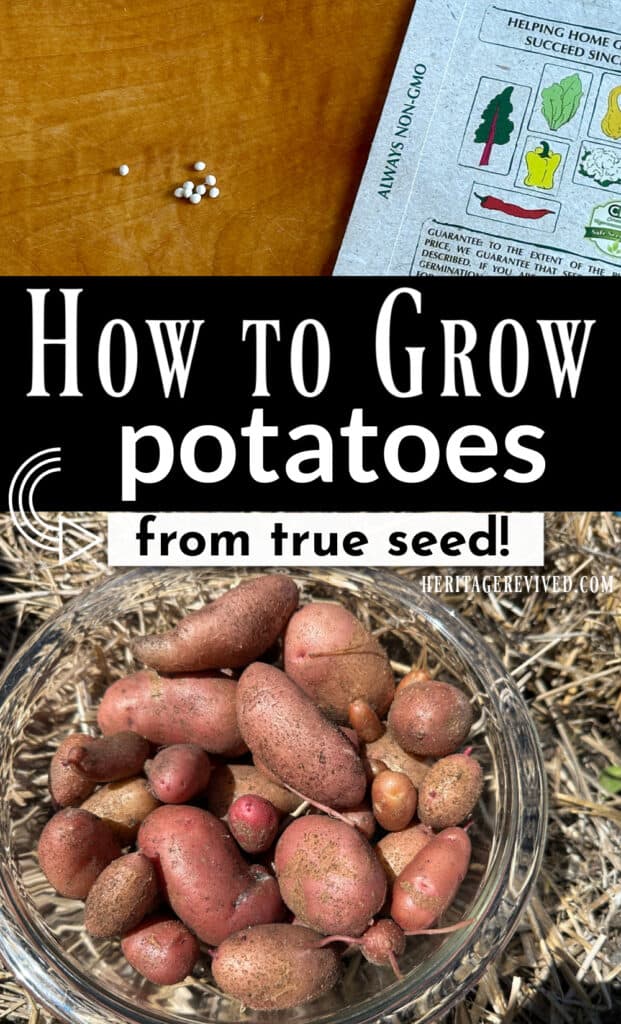
You might also like:
How to fill raised garden beds cheaply